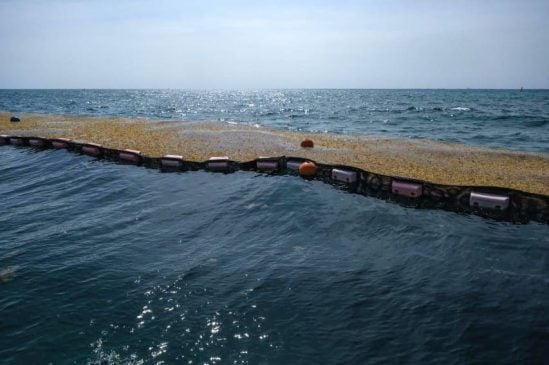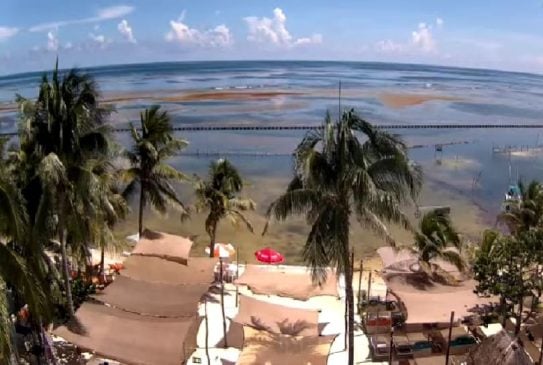Cancun, Riviera Maya, Q,R. — On September 15, the Secretary of Ecology and Environment of Quintana Roo announced that based on the latest weekly satellite observations made by the Sargasso Monitoring Network, a significant decrease has been observed and the season deemed over.
In a press release, the state government says there is very little amounts of sargassum in the coastal waters of the Caribbean Sea, adjacent to the Yucatan Peninsula, as well as the waters of the Greater Caribbean, the Lesser Antilles Arc and the central part of the Atlantic Ocean.
Thanks to the high definition satellite images shared by the European Space Agency (ESA), images show that at least for the next three months, until the end of the year, the region can expect very small amounts of sargassum on Cancun, Riviera Maya beaches. For this reason, the government says they have conclude the 2020 sargassum season.
Even as far south as Mahahual where sargassum hit hard last year, the arrivals were a lot less than anticipated. Alondra Martínez Flores, director of the Environment and Ecology in Othón P. Blanco explained that this year, the amount was 80 percent less than last.
The official indicated that at the end of August and the beginning of September, the arrival of just over 2,000 tons of sargassum was expected, but this did not happen. During the last days of cleaning, they collected only seven seven-meter cubic dump trucks.
“It decreased a lot. Actually, last week, we did not have sargassum arrival, so the beaches were clean,” he said.
Alondra Martínez said that it was in July, when the seaweed began to arrive in greater quantities, but nothing compared to what happened last year. “The forecast indicated that July and August would be the greatest recall, but it was not like that,” he said. In fact, the official explained that compared to 2019, the arrival of seaweed to the coast of the state, especially to Mahahual, was minimal.
“Last year the arrival of sargassum began long before Easter and lasted throughout October,” he recalled.
In previous years, sargassum posed a challenge, arriving in large quantities which was added to the emerging measures taken by government authorities to address the problem. This year, however, the entire region experienced a contrast. Not only were municipalities prepared with specially made sargassum collection vessels, seaweed barriers and additional cleaning equipment, the seaweed arrived in considerably lower amounts.


